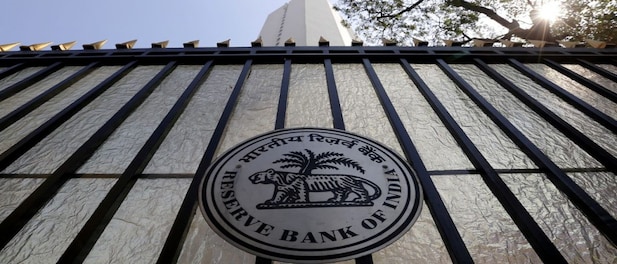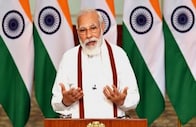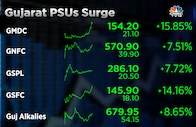The pause in the repo rate–could have been based on multiple factors such as the projections for reduction in crude prices, reduced inflation, sustained economic growth, weakening of the Indian currency, normal monsoon and lower fiscal deficit. And, it is also important to note that India’s growth rate is much more than the global growth as the International Monetary Fund’s January 2023 report expects the global growth to moderate from 3.4 percent in 2022 to 2.9 percent in 2023 and 3.1 percent in 2024--writes Deloitte India's banking and financial experts Bahroze Kamdin and Ramsurya Mamidenna.
The Reserve Bank of India (RBI) on 6 April released its Monetary Policy Report for April 2023 where in the central bank kept the repo rate unchanged breaking a trend that has seen interest rates hiked six times consecutively.
The repo rate, which is the rate at which commercial banks borrow from the RBI against government securities, and which transmits to all interest rates (on lending and deposits) in the economy, has been maintained at 6.50 percent. The Monetary Policy Committee (MPC) had increased the repo rate consecutively since May 2022, with the continued stance to withdraw accommodation.
The pause in the repo rate–could have been based on multiple factors such as the projections for reduction in crude prices, reduced inflation, sustained economic growth, weakening of the Indian currency, normal monsoon and lower fiscal deficit.
The RBI said that while the policy rate has been increased by 250 bps cumulatively since May 2022, and “is still working through the system, there can be no room for letting down the guard on price stability.”
The MPC sought to remain focused on aligning inflation with the target – the medium-term target for the consumer price index (CPI) inflation is 4 percent, within a band of +/- 2 percent - while supporting growth.
According to RBI, the crude oil prices are expected to reduce to US$ 85 per barrel in FY 2023-24, from US$ 105 per barrel during HY 2022-23. The exchange rate of the Indian rupee to the US dollar is expected to be INR 82/1US$ in FY 2023-24, compared to INR 80/1US$ in HY 2022-23. The fiscal deficit has been reducing from 9.2 percent in FY 21 to 6.7 percent in FY 22 to 6.5 percent in FY 23 and 5.9 percent in FY 24.
The RBI also said that economic activity had remained resilient in Q4, that rabi food grains production could increase by 6.2 percent in 2022-23 and the index of industrial production (IIP) expanded by 5.2 percent in January; the output of eight core industries rose even faster by 8.9 percent in January and 6.0 percent in February, which indicates the strength of industrial activity.
Also Read: RBI Monetary Policy: GDP growth forecast for FY24 raised to 6.5%, here is what experts say
According to the International Monetary Fund’s January 2023 report, global growth is expected to moderate from 3.4 percent in 2022 to 2.9 percent in 2023 and 3.1 percent in 2024. In comparison, India’s growth rate is much more than the global and as per the Economic Survey of 2022-23, GDP growth in India was 8.7 percent in 2021-22, 7 percent in 2022-23 and is expected to be 6.5 percent in 2023-24. The Economic Survey said CPI inflation was 5.5 percent in 2021-22 and 6.8 percent in 2022-23.
Thus, the services sector was the main driver and has rebounded, but the manufacturing sector has pulled down. As per the MPC, economic activity would be supported by improving rural demand, the government’s thrust on infrastructure spending, revival in corporate investment, healthy bank credit, and moderating commodity prices. Headwinds from prolonged geopolitical tensions, tighter global financial conditions, global financial market volatility and slowing external demand are the key risks to this outlook.
An interesting study has been shown in the MPC report in that, the multiplier for public investment on private investment is 1.2 and on overall GDP, it is 1.7 over a three-year period. Thus, capital spending by the government should induce private investments and domestic demand leading to growth in GDP of India.
There have been pause or rate cuts in major BRICS countries. The monetary policy of central banks typically impacts liquidity in the marketplace, interest rates on lending and deposits and inflation, which eventually impacts economic activity in the country. There are risks in the economy and these are generally projections, based on certain presumptions. With no increase in the policy/repo rate, the interest rate should not change or could reduce, both on lending and investment, and so inflation should be maintained or reduced and hopefully the key macro-economic indicators improve.
—The authors, Bahroze Kamdin, is Partner, and Ramsurya Mamidenna, is Senior Manager, at Deloitte India. The views expressed are personal.
(Edited by : C H Unnikrishnan)
First Published: Apr 20, 2023 7:52 AM IST
Check out our in-depth Market Coverage, Business News & get real-time Stock Market Updates on CNBC-TV18. Also, Watch our channels CNBC-TV18, CNBC Awaaz and CNBC Bajar Live on-the-go!







